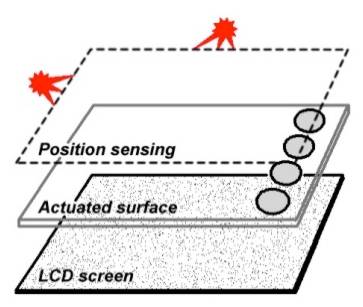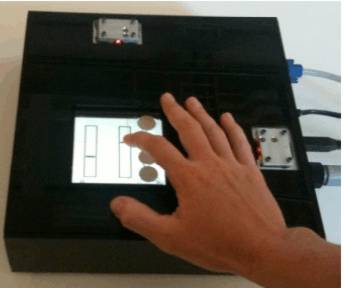| A sticky touch screen improves interaction |
| Written by Lucy Black |
| Tuesday, 10 May 2011 |
|
A prototype demonstrated at the currently ongoing ACM conference suggests that the touch screens of the future will let you feel the virtual buttons. I don't know about you but I have a problem with sticky touch screens - whenever I try to clean the jam off I activate and use a lot of apps I never intended to. Now a research group has suggested that far from wiping off the stickiness it is something that should be added to all touch screens to improve interaction. The idea is to use vibration to create variable friction areas on a touch screen so that your finger "feels" a physical structure. As you pass your finger across the surface it slips and sticks as it encounters the different areas.This can be used to give the physical sensation that there are real buttons or other widgets "engraved" on the touch screens. Haptics already provides a degree of feedback by vibrating the device when a button is pressed for example but this works on a different principle. The vibration is applied directly to the glass and provides a layer of air between your finger and the screen which reduces the friction.
Instead of embedding lots of transducers across the surface of the panel the system tracks the figure position and simply turns the vibration on and off. For example when your finger reaches the location of a virtual button the vibration is switched off and you feel as if you have reached an obstruction. A scroll bar can be made to seem to "click" from one position to the next in the same way. Similarly by turning the vibration on and off as the finger moves the panel can be made to feel as if it was covered by a positioning grid.
A prototype of the device - T-Pad (Tactile Pattern Display) was demonstrated at the ACM Conference on Human Factors in Computing Systems. The only big problem with the device is that it only provides feedback while the finger is moving - once it stops the touch panel is either vibrating or it isn't and it is the transition that is all-important. More Information:Enhancing Physicality in Touch Interaction with Programmable Friction
|
| Last Updated ( Tuesday, 10 May 2011 ) |



